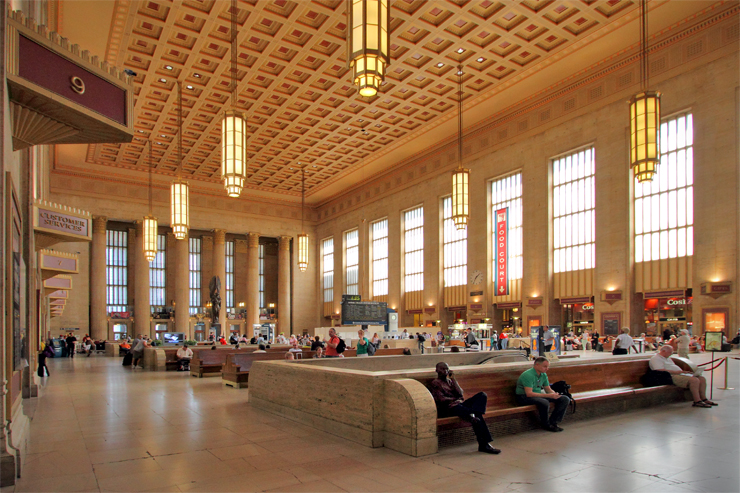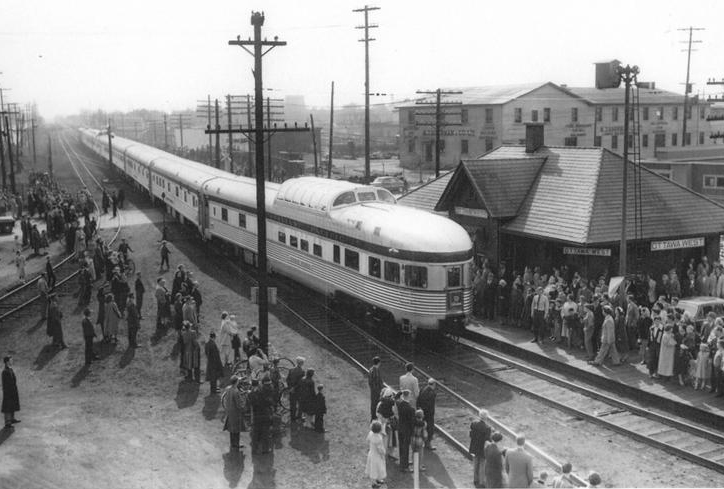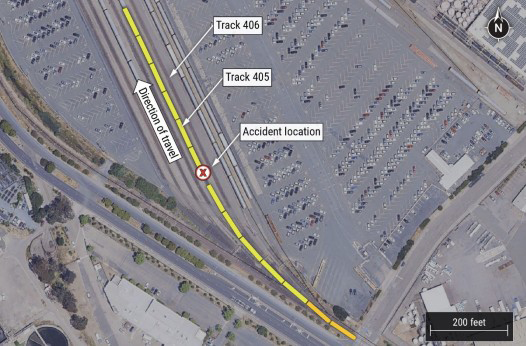
PHILADELPHIA — Amtrak has reached agreement with developer Plenary Infrastructure Philadelphia on a lease and development agreement for restoration and renovation of its main station in Philadelphia, the William H. Gray III 30th Street Station.
Under the agreement, Plenary will refurbish and improve the nearly century-old building, finance the improvements, and maintain the station for 50 years. Plans include expanded retail facilities, renovation of the office space in the station’s upper levels, modernization of back-of-house facilities to accommodate projected ridership increases, and bringing the station into an overall state of good repair while “celebrating and enhancing” the facility’s Neoclassical and Art Deco design.
“This important milestone in the Gray 30th Street Station redevelopment project is part of Amtrak’s overall strategy to enhance the customer experience and operations at our major stations,” Dennis Newman, Amtrak executive vice president of planning and asset development, said in a press release. “The scope of this work will transform this historic Philadelphia landmark into a modern world-class station with superior amenities, better intermodal connectivity and new customer-facing improvements over the next five years.”
Construction is scheduled to begin in 2022 and be completed in 2025.
“On behalf of the Plenary Infrastructure Philadelphia team, we’re delighted to have reached financial close on the Gray 30th Street Station Redevelopment Project. We look forward to our long-term partnership with Amtrak and ensuring an improved customer experience for travelers and visitors to this historic station,” said Dale Bonner, Executive Chairman of Plenary Concessions Americas.
The eight-story station was built between 1929 and 1933 by the Pennsylvania Railroad, and his been listed on the National Register of Historic Places since 1978. It last underwent renovation by Amtrak between 1988 and 1991, a $75 million project that included repairs to two notable art works, the bas-relief The Spirit of Transportation and the Pennsylvania Railroad War Memorial.
In 2014, the U.S. Congress passed a law renaming the station for former U.S. Rep. William Herbert Gray III, who represented Pennsylvania from 1979 to 1991. A detailed look at the station is available at Amtrak’s Great American Stations website.














YEAH and 1st thing AMCRASH did was to abolish 54 electrician and B&B jobs and turned it over to the developer. The men were told basically to bump to other jobs, which could mean up to a 40-50 mile travel or take the layoff.
“(1) Back Bay Station was named after A. Philip Randolph maybe in the 1980’s.”
That’s right, I remember reading that. Charles, you jogged my memory. Consider this an expression of gratitude from yours truly, who took AMTK from Wilmington, DE to BBY (on my Boston vacation in 2006.
“(2) Boston’s Southeast Expressway opened around 1959 with commemorative signs as the Casimir Pulaski Skyway, hijacking the name as in Mark Shapp’s post below . No one ever called it that, but that was the official name in Commonwealth of Massachusetts documentation. The designation as Route I-93 came later.”
I always thought “the Expressway” (as WBZ traffic reporters in my listening experience always called it [without additional nomenclature], with “I-93” refering to the stretch from the Zakim Bridge or its predecessor north to New Hampshire) was named for long ago Hub mayor John F. “Honey Fitz” Fitzgerald (pop-pop of Jack, Bobby and Ted).
“Some commemarative names stick and some don’t. Milwaukee, Chicago O’Hare, Boston and Providence airports are widely known by the men they’re named afterwards. Detroit area freeways once were commonly known by names such as Walter P. Reuther, Walter P. Chrysler and Edsel B. Ford but these names seem to have fallen away in favor of the Interstate Highway shields. In contrast Chicago expressway names are still used.”
On the other side of the coin, I thought for years as a kid that the Outerbridge Crossing in New York was named for its more distant location from Manhattan. Turned out there was someone named Outerbridge.
Am I correct that the developer will pay for all the renovations in return for the right to receive rental monies from the tenants other than Amtrak? If so, this could be a good deal for all parties.
The Pulaski Skyway, aka Routes 1 and 9, is in northern New Jersey. Goes over the Hackensack River east of Newark.
“How many people know where A. Philip Randolph Station is? Or Casimir Pulaski Skyway? Hint both are in Boston and neither downtown”
I heard of neither until I read your post, Mr. Landey. Where in Boston are they? Google Maps isn’t helping.
JOHN:
(1) Back Bay Station was named after A. Philip Randolph maybe in the 1980’s.
(2) Boston’s Southeast Expressway opened around 1959 with commemorative signs as the Casimir Pulaski Skyway, hijacking the name as in Mark Shapp’s post below . No one ever called it that, but that was the official name in Commonwealth of Massachusetts documentation. The designation as Route I-93 came later.
Some commemarative names stick and some don’t. Milwaukee, Chicago O’Hare, Boston and Providence airports are widely known by the men they’re named afterwards. Detroit area freeways once were commonly known by names such as Walter P. Reuther, Walter P. Chrysler and Edsel B. Ford but these names seem to have fallen away in favor of the Interstate Highway shields. In contrast Chicago expressway names are still used.
And PLEASE no more advertising/publicity banners (or any other kind) hanging over the south wall windows!
It’s “Pennsylvania Station – 30th Street,” despite all attempts to politicize the name.
How many people know where A. Philip Randolph Station is? Or Casimir Pulaski Skyway? Hint both are in Boston and neither downtown and both for ethno-political reasons.